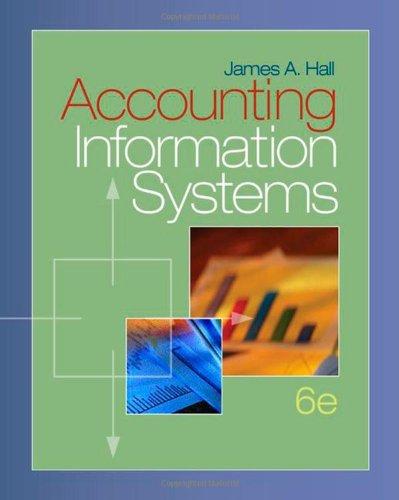Bait n Reel Superstore (Prepared by Matt Wisser, Lehigh University) Bait n Reel was established in 1983
Question:
Bait ‘n Reel Superstore
(Prepared by Matt Wisser, Lehigh University)
Bait ‘n Reel was established in 1983 by Jamie Roberts, an avid fisherman and environmentalist.
Growing up in Pennsylvania’s Pocono Mountains region, Roberts was lucky enough to have a large lake right down the road where he found himself fishing all throughout the year. Unfortunately, he had to drive more than 15 miles to purchase his fishing supplies, such as lines, hooks, and bait, among other things. Throughout the years of his early adulthood, he frequently overheard other fishermen vocalizing their displeasure at not having a local fishing store to serve their needs. Because of this, Roberts vowed to himself that he would open his own store if he could ever save up enough money.
By 1983, he had sufficient funds in his bank account and the opportunity arose as a local grocery store was up put up for sale.
He purchased the building and converted it into a “Bait ‘n Reel” fishing store. His first customers were locals who had fished with Roberts over the years. The local convenience factor and the simple pleasure of helping out a friend enticed them to shop there. However, after many years, people from all over the county started to come as Roberts increased his advertising efforts, emphasizing his ability to provide excellent service and the wide supply of fishing goods in stock. This included high-end fly fishing rods, reels, drift boats, and canoes, as well as less expensive daily use items such as hooks, lines, etc.
By the mid-1990s, the building expanded into a superstore, and the number of employees increased each year. With the help of a friend, Roberts also installed an automated computer system to help make operations more effective and efficient, in addition to reducing the amount of paper used at his superstore. Revenue increased sharply during the four years after the implementation of the computer system. In spite of this, Roberts had some questions about the processes, as many of the subsidiary accounts did not match up with the general ledger. This didn’t prove to be a material problem, however, until 2001, when the computers began listing supplies in the inventory account that were actually not on the shelves. This created problems as customers became frustrated by stock-outs. Roberts knew something was wrong, but he couldn’t put his finger on it.
Expenditure Cycle Purchases System The purchasing manager checks the inventory subsidiary ledger on his computer terminal every morning when he arrives at work. When a certain inventory item is deemed to be too low, he reviews the valid vendor file, also on his terminal, to select the best-priced vendor for that particular item. Once a vendor is found, he prepares an electronic version of the PO, in addition to two hard copies of the PO. One hard copy is sent to the vendor immediately, while the other is filed in the department. Immediately after this event, the electronic version of the PO is sent out to two terminals: one in the receiving department and one in the AP department.
When the clerk in the receiving department receives the electronic PO, he reads over it once to make sure it seems correct. When the goods arrive, he makes a detailed inspection of them and reconciles the goods to the corresponding information contained in the electronic PO. If everything looks correct, the clerk prepares two copies of the receiving report. One of these copies accompanies the goods to the inventory control department, where the clerk updates the inventory subsidiary account from his terminal; it is then filed as the goods are put on the shelves. The other copy of the receiving report is sent to the AP department.
Upon receipt of the receiving report, the AP clerk matches up the information for the respective order to the electronic PO on his terminal. He then updates the AP subsidiary ledger from his terminal to reflect the transaction.
The clerk temporarily files the receiving report until documentation arrives from the vendor. For Bait ‘n Reel’s convenience, the vendor always sends a photocopy of the original PO along with the invoice so any discrepancies can immediately be identified. When the AP clerk receives the invoice and PO copy, he pulls the receiving report from the temporary file and reconciles the three documents.
At this time, the clerk updates the AP control account in the general ledger on his terminal.
The three documents are then passed on to the cash disbursements department.
Cash Disbursements System The clerk in the cash disbursements department spends his entire day matching up the invoice, PO copy, and receiving report.
Assuming everything reconciles, he prepares a check for the invoiced amount. Once this is completed, he updates the check register, cash subsidiary account, and the general ledger on his terminal. The three documents, along with the check, are then passed on to the assistant treasurer. As an additional control, he reviews everything once again to ensure consistency between all documents. He makes a copy of the check for record-keeping purposes and then signs the original check, which is immediately sent to the vendor for payment. The invoice, PO copy, receiving report, and check copy are filed in the department.
Required:
a. Create a data flow diagram of the current system.
b. Create a document flowchart of the existing system.
c. Analyze the internal control weaknesses in the system. Model your response according to the six categories of physical control activities specified in SAS 78.
d. Prepare a system flowchart of a redesigned computer-based system that resolves the control weaknesses you identified.
Step by Step Answer:






